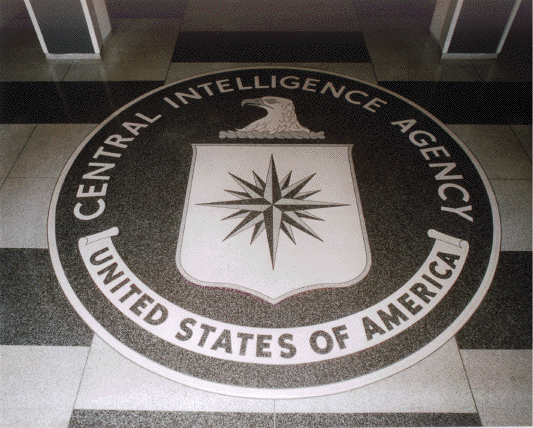The US had a variety of ways to influence citizens behind the ‘iron curtain’ during the Cold War. One of those was radio broadcasts. Here, Richard Cummings, author of a recent book Cold War Frequencies (Amazon US | Amazon UK), continues the catastrophic story of how the CIA got a vessel ready to broadcast in Albania in the early 1950s. Here, Richard looks at what happened when the ship was close to Albania.
Read part 1 on how the U.S. prepared for the mission here.
Enver Hoxha, First Secretary of Albania from 1946 to 1985. Shown here in1944.
The JUANITA arrived in Greece on March 25, 1951, to perform the following mission under Project BGSPEED:
The JUANITA was equipped to broadcast on the medium wave band into Albania, utilizing the skip wave technique. When the JUANITA was purchased, there was no certainty that any country would grant permission for her to operate within that country's coastal waters. Therefore, it was understood that the broadcasts might have to be conducted from the open sea, that the vessel obtained for this role would have to be sufficiently seaworthy for open sea operations, and the equipment capable of broadcasting from a considerable distance at sea.
This skip wave, which exists both day and night, becomes effective as darkness falls and the ionosphere descends and becomes ineffective as the sun rises and the ionosphere ascends.) During the night hours, the beam from the antenna strikes the ionosphere. It bounces back to earth, permitting reception much farther from the transmitter than is normally possible by ground wave--which follows the ground sixty or seventy miles or so, depending on terrain, and grounds out.)
Problems
After the JUANITA arrived in Greece, serious problems began; below is a summary of these problems, extracted from declassified OPC and CIA reports -- in no particular order of importance.
· A contract engineer was sent to Greece to review the JUANITA operation. He wrote: “The JUANITA was intended to broadcast medium wave--skip wave into its target from 175-300 miles, came to light during a meeting with Washington communications men two days before my departure to Athens. On arrival in Athens, I found that the men (operations and communications) had been unacquainted with this intention. They expressed surprise that Washington intended to depend on skip wave, for they believed skip wave had never been depended on before for medium wave broadcast.”
· The Albanian area is greater than the noise level off the U.S. east coast. Radio stations in the Balkans make a Babel of voices, move up and down the dial, and operate with many times the power the JUANITA was given
· A chance, ever-present in open sea operation, of a wave through the wheelhouse door or the hatch over the transmitting room threatened to fry the communications men at their posts and disable the equipment permanently
· There is no ventilation in the transmitting room. The heat and smell when the equipment in operation is intense enough to cause sickness, a condition aggravated by semi-tropical weather and the violent movement of the ship
· The vessel was delivered in the U.S. with its original wiring, which is of the house type and unsuitable for marine use. The vessel's house-type wiring causes repeated fires. This is evidenced by numerous minor fires which have occurred onboard and the extreme difficulty that the engineer has had in maintaining electric current throughout the vessel
· At anchor in a sheltered island cove, one finds oneself a few hundred yards from village dwellings. After the fall of darkness, the large white yacht, whose presence has brought excitement to the otherwise dreary existence of the islanders, lights up (when transmitting) like a Christmas tree. Spreader and running lights glow, and brilliant flashes play about the rigging.
Conclusions
One conclusion of the JUANITA'S history was: "It was not necessary to buy a yacht, equip her, operate her, sail her across the Atlantic, and maintain her in Greece for half a year to demonstrate that her transmitting equipment would not work."
In one OPC report, there was this commentary:
I wish to reiterate my belief that there need be no apologies by anyone for a decision now to liquidate this particular experiment. It has provided some people with valuable experiences and has taught several lessons that could not have been learned without the basic proposition being tried out in actual practice. It has, however, taken up a great deal of time that might better now be directed to more pressing and fruitful activities.
In March 1952, Acting Assistant Director for Policy Coordination wrote a memorandum to the Assistant Director, Office of Communications, in which he summarized the principal failures of Project BGSPEED, part of which read:
Many things have gone wrong in the implementation of this project, and it was terminated in October 1951. No actual broadcasting ever took place. Much of the onus for the failure can be attributed to shortcomings within OPC. These include lack of seasoned judgment from various OPC officers concerned with the project, lack of continuous, adequate supervision, unfortunate selection of a vessel: etc. On the other head, the communications equipment provided proved inadequate for the contemplated operation. This constitutes an expensive lesson for OPC.
The JUANITA, purchased for $80,000 in 1951, was sold in May 1953 for $10,000.
Although Project BGSPEED was considered a failure, that did not stop OPC from beginning clandestine psychological warfare broadcasts into Albania as the Voice of Free Albania (often interchanged with Radio Free Albania) from the CIA radio transmitting site near Athens, Greece at 10 p.m. local time on September 18, 1951.
This article is based on Chapter 5 of Richard’s book: Cold War Frequencies: CIA Clandestine Radio Broadcasting to the Soviet Union and Eastern Europe, published in 2021 by McFarland & Co. Available here: Amazon US | Amazon UK















